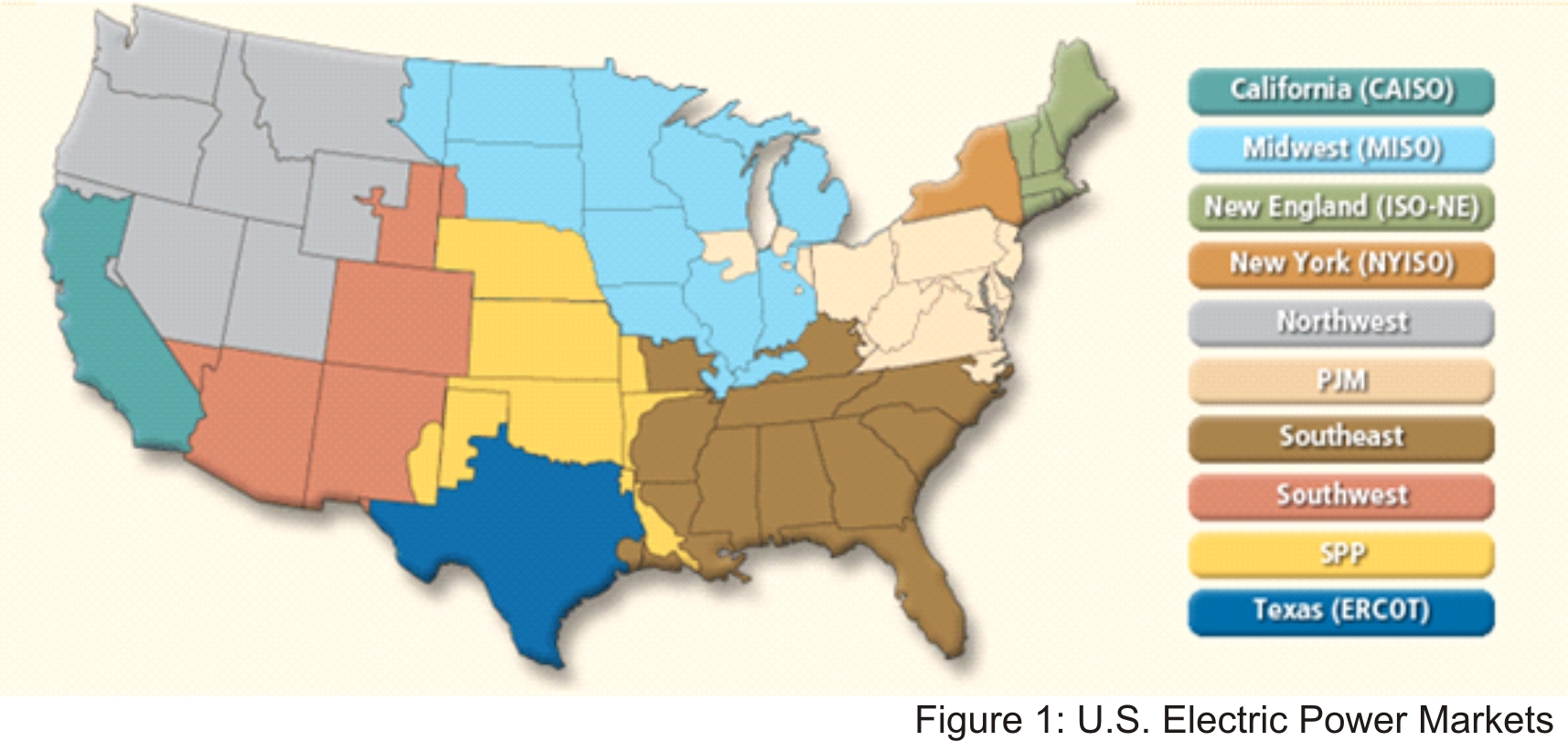
One of the lesser known aspects of the utility and demand side management (DSM) world is the Forward Capacity Market (FCM). This market can have a significant impact on program planning, and especially program evaluation. This first brief, in a two-brief series, defines what the forward capacity market is and provides a quick overview of how it works. The second brief, coming to a nearby inbox later in May, will discuss how it can significantly impact program evaluation.
What is the forward capacity market?
Simply, the FCM is a place where regional utilities can purchase excess resources (i.e. generation capacity) from other utilities in the same region. These contracts are put in place years into the future. For example, the most recent ISO-New England auctions covered 2017 – 2020. The goal of these auctions is to make sure that the grid has enough supply to run reliably (i.e., prevent rolling black outs). Also, by purchasing power in advance, utilities can get a better price and avoid buying extra power on the spot later for a much higher price. This keeps costs as low as possible for end users.
What types of resources can be bid in?
There are three main types of resources that can be bid into these markets: new generation and imports, existing resources, and new demand resources.
New Generation and Imports – These are exactly what one would expect. New power plants, new additions to existing power plants, or re-using old capacity that has turned off are all examples of new generation. Simply put, new generation/resources have never been listed on the market before.
Existing Resources – These resources are the exact opposite of new resources. Anything that has previously been listed on the market but is up for sale again in a different time period is defined as an existing resource. For example, if Michaels Energy Co. sold extra capacity at its new Mr. Fusion power station for the first time in 2017, that would be new. However, if Michaels is still projecting to have extra capacity in 2018, they can list it again as an existing resource the next year.
New Demand Resources – The third type of resource described above. Included in this category are distributed generation (self generation), load management (interruptible service customers; i.e., demand response), and energy efficiency. This is where DSM programs fit in. Utilities or states that run DSM programs can claim the achieved savings as a demand resource in the FCM. Savings must be verified through an independent DSM program evaluation contractor.
Sounds simple, right? Step 1 – complete the program evaluation that is required anyway. Step 2 – take the verified aggregated savings and bid them into the FCM to recover some additional revenue.
Not so fast! The wrinkle comes with how this impacts program evaluation planning, and more importantly (gasp), budgets.
Stay tuned for part two. Same bat time, same bat channel!




